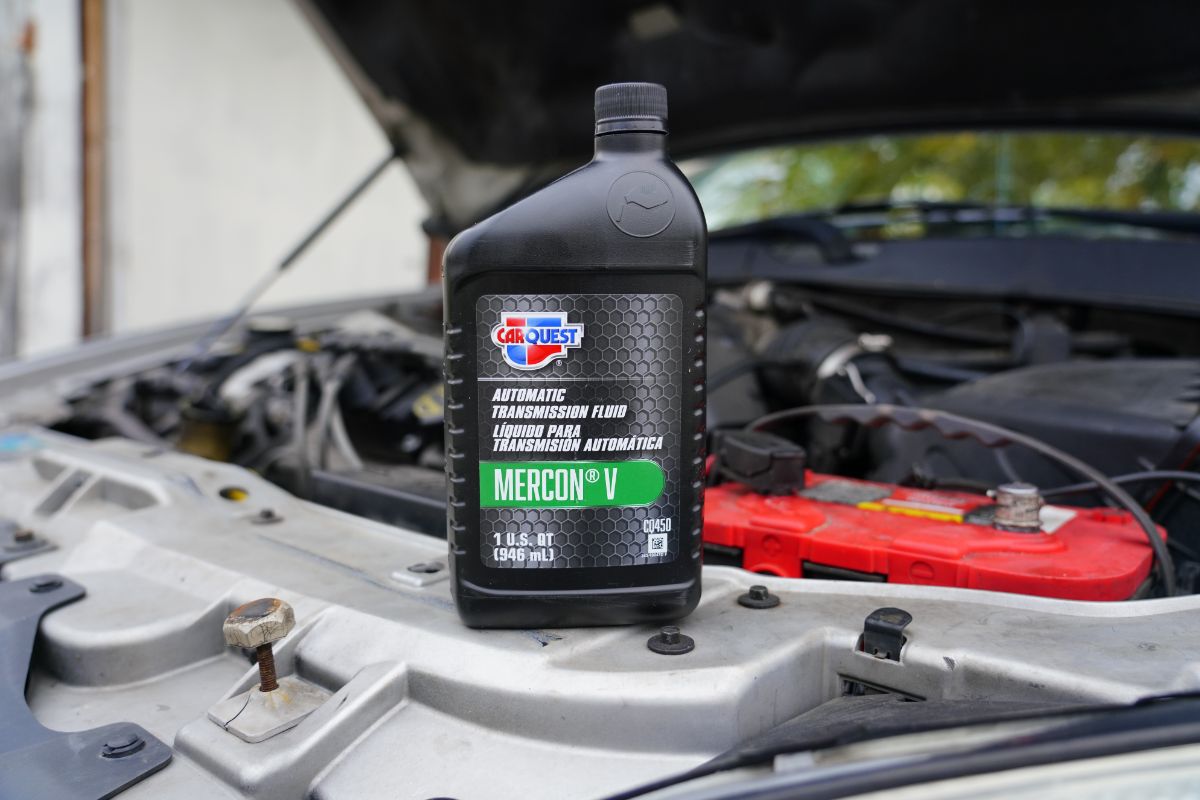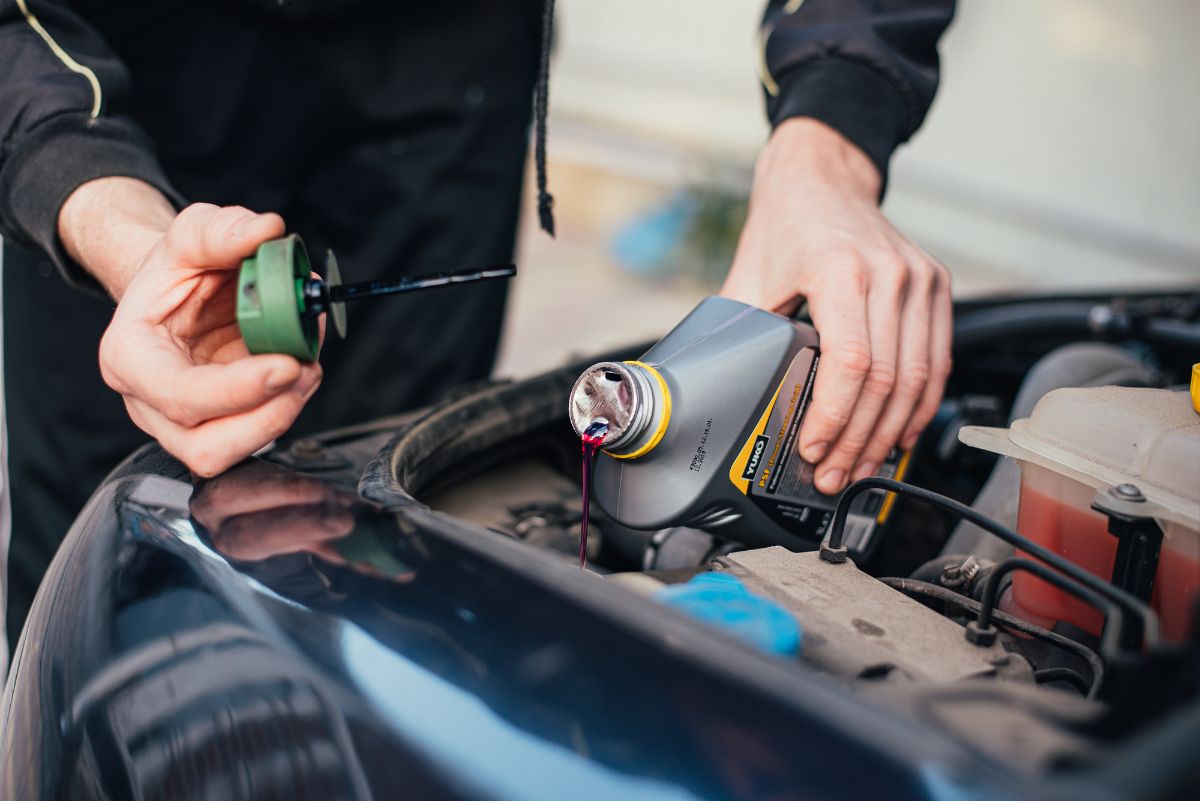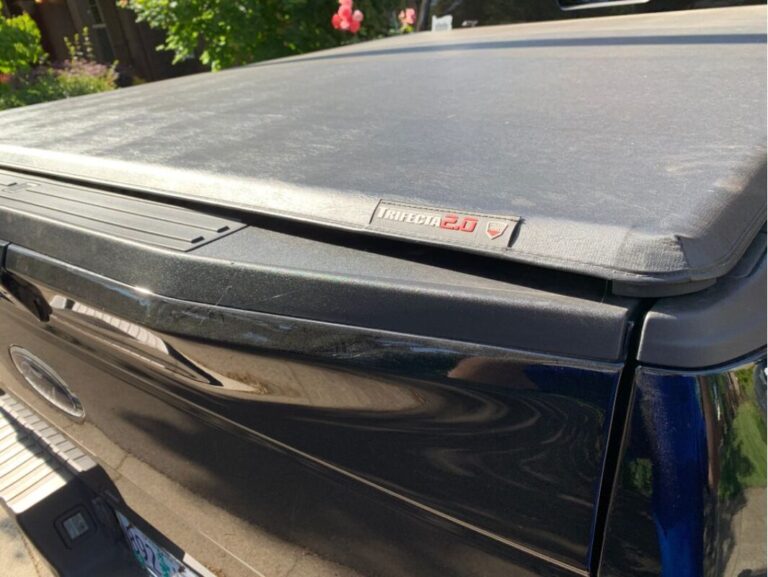
Your car has several fluids running through it – among them, the transmission fluid. Its job is to lubricate the bearings and metal parts inside your car’s gearbox. Therefore, these parts don’t wear down, especially when shifting.
Notably, there are several types of transmission fluid – although there are two main types – all of which we shall explore in this article. Besides discussing the various types, we shall also discuss how you can choose the best type for your car.
Towards the end, you will find answers to frequently asked questions regarding transmission fluid. Dive right in!
The Various Types of Transmission Fluid
As I mentioned earlier, the two main types of transmission fluid are automatic transmission fluid and manual transmission fluid. There is also a third type – the synthetic transmission fluid. Let’s take a closer look.
1. Automatic Transmission Fluid (ATF)
Inarguably, most passenger cars and light truck transmissions are automatic. That means they don’t need to shift gears manually. Therefore, they rely on automatic transmission fluid to function correctly. Here are some of the roles played by ATF:
Hydrodynamic Function: As the sea wave transfers power from one place to the next, the ATF conveys the energy of the internal combustion engine to the transmission.
Anti-wear Agent: The automatic transmission fluid creates a protective film between metal components, reducing the chances of wear and tear.
Clutch Friction Operation: The ATF supplies sufficient friction to the transmission clutches and bands for smooth gear changes.
Cooling and Surface Cleaning: The ATF cools all transmission components and cleans the surfaces inside the transmission.
Seal Protection: The ATF also protects the seals from harsh chemicals present in the transmission oil. That prevents the transmission oil pressure from going down, which could result in external leaks.
Acts as a Demulsifier: The ATF ensures that any unfamiliar fluid remains in a non-dissolved state.
Low-Temperature Flow: The automatic transmission fluid ensures that hydraulics and electronics work optimally at low temperatures.
Choosing the Ideal Automatic Transmission Fluid
The ideal ATF for you will depend on a couple of things. These include the manufacturer and the model type.
However, in most cases, you don’t have to break a sweat deciding the best ATF for your car since you can find your manufacturer’s recommendation on the vehicle’s manual. Let’s take a look at the categories under which automatic transmission fluids fall:
Ford, GM, and Chrysler ATF Specification
These three manufacturers have established their specifications when it comes to automatic transmission fluids. GM has the DEXRON series as their specification, Ford has MERCON, and Chrysler has ATF +4.
2. Multi-Vehicle Transmission ATF
Multi-vehicle transmission fluids have been on the rise in the last couple of years. Most of them not only carry GM, Ford, and Chrysler specifications but also support Japanese and European vehicles.
3. Continuously Variable Transmissions
Commonly referred to as CTVs, they are best known for improving fuel economy. Therefore, you are most likely to find them in hybrid vehicles – although it’s not uncommon to see them in non-hybrid ones as well. Notably, CVTs have step transmissions.
That means they have continuously changing speed ratios, which means unique gear shifts. Therefore, CVT fluid comes in handy to enhance performance and provide protection.
4. Type F Transmission Fluid
Type F transmission fluid aligns with the old Ford specification – so it might not be ideal for the latest model. It would be good for you if yours is an older Ford classic car. It is also suitable for racing and hydraulic applications.
5. Manual Transmission Fluid
As the name suggests, manual transmission fluid is for cars with manual transmission. Other people might refer to it as lube or manual transmission oil. Typically, this fluid is heavy – between 75W and 140W.
That means you can never substitute it for ATF in your automatic car. Some vehicles with a manual transmission don’t use it. It is possible to have a manual transmission car and still use ATF, especially if it’s a recent model.
Changing Your Car’s Transmission Fluid at Home
If you are one of those people that don’t mind getting their hands dirty, you can change the transmission fluid at home. Who wouldn’t like saving a penny or two? The good news is, it doesn’t have to be so messy a job – if you do it correctly.
The trick is working from the top instead of going under your car to drain the old fluid. So, you can get a hand-operated vacuum transmission fluid pump and suck the old fluid out through the filler tube. Then you can put the new fluid through the same tube.
Notably, you can only suck one-third to one-half of the fluid at a time. Therefore, you will have to repeat the procedure around three times – a week apart to replace all the old fluid. Don’t forget to wear your plastic gloves.
You might be wondering if you have to change your filter each time you change the transmission fluid. There is no standard rule, so the best thing to do is follow what your dealership recommends.
Frequently Asked Questions
Here are some of the commonly asked questions about the types of transmission fluid.
What’s the difference between synthetic and traditional transmission fluid?

The difference between these two forms of transmission fluids lies in how they are made. Traditional transmission fluid is made from crude oil. There are also hydrocarbons, which are usually reshaped to fit the specification of different vehicles.
On the other hand, synthetic transmission fluid results from a chain of chemical reactions. Therefore, it has lower chances of breaking down, oxidizing or thinning out when the temperatures go up. When it comes to choosing between the two, always refer to your vehicle user’s manual.
What’s the appearance of transmission fluid?
The appearance of the transmission fluid depends on its type. It will have a darker color and a thick consistency if it’s manual. A strong smell also characterizes it.
On the other hand, automatic transmission fluid has a lighter color, usually translucent with a red hue. The consistency is considerably thinner. Due to its distinct color, you can easily detect a leak.
How often should I change my transmission fluid?
Regardless of the car you own, your transmission fluid cannot last forever. But how do you know when it’s time to change your transmission fluid? Again, that goes back to the type of transmission your vehicle has.
Changing the transmission fluid between 30,000 and 60,000 miles will do the trick if it has a manual transmission. In the case of an automatic transmission, you can change the transmission between 60,000 and 100,000 miles.
However, those ranges are just recommendations, not rules cast in stone. You can change your fluid earlier than that, especially if yours is a heavy-duty use vehicle.
Are there tell-tale signs that I need to change my transmission fluid?

Yes. As a matter of fact, you can notice some of these signs yourself. However, sometimes it might take a trained eye. Some of the signs that you need to change your transmission fluid include:
- A dark brown of blackened transmission fluid
- Slipping gears
- Unexpected forward or backward surging
- Difficult shifting
- Grinding noise while shifting
Are there repercussions for changing your transmission fluid too late?
Waiting too long before you change your transmission fluid can have dire consequences on the transmission and its lifespan. For instance, there is a possibility that once you decide to change the fluid – after waiting forever – the new fluid might start slipping.
So, you might wonder, “what happens if I can’t remember the last time I changed it?” We can all admit that sometimes it slips your mind, and suddenly you don’t remember when you last changed your transmission fluid.
In that case, inspect the fluid for signs I have outlined above. The other possible scenario is when you buy a used car. In that case, the best place to start is to ask for service records from the previous owner.
Should I change or flush my transmission fluid?
A transmission fluid change means changing a significant amount of the fluid in one session, but not all of it. During the change, a large amount of the buildup within the system goes away.
On the other hand, a transmission fluid flush gets rid of all old fluid and replaces it with new. Usually, a change is cheaper than a flush. However, a flush might prove to be more efficient.
How can I tell if my transmission fluid is running low?

Besides seeing the leakage on the ground where you park, there are other ways to tell that your transmission fluid is running low. For instance, you might hear roaring sounds when accelerating or winding a corner. Y
ou might also notice a whining or buzzing sound. The color might also change as the levels dip. You might see a brown or muddy green color. Sometimes, you might even notice a burning smell.
However, in most modern vehicles, you don’t have to go through the trouble of looking for these signs. These vehicles have a warning light that goes off anytime there is a problem with your transmission.
What happens if I let the transmission fluid run out?
I started by mentioning that the transmission fluid is so essential for the smooth operation of your vehicle. Should you let it run out, your car will not go into gear – especially if it’s an automatic transmission car.
Is transmission fluid the same as engine oil?
This is always a bone of contention. While the two have similar ingredients for their base oils and additives, they are not the same. The significant difference is that while the engine oil is a lubricant, the transmission fluid is hydraulic oil. But that’s not all. Let’s explore other differences.
1. They Differ in Appearance
These two oils look very different from each other. As you’ve read earlier, automatic transmission fluid has a red hue, while manual transmission fluid leans towards dark green.
CVT fluid is typically translucent with a green hue. On the other hand, engine oil is translucent with an amber hue. Besides, since engine oil is a lubricant, it has a lower viscosity compared to transmission oil.
2. Response to Mileage and Time
The two respond differently to mileage and time. Engine oil tends to lose its effectiveness faster. Therefore, you need to replace it every 3,000-6,000 miles. Otherwise, it loses its properties and could damage your engine. On the other hand, transmission fluid is more resilient.
3. Different Applications
Besides lubrication, engine oil also keeps the engine clean. It also acts as a coolant and assists with heat transfer. It also seals the engine against contaminants and protects it against water damage and corrosion.
The transmission fluid enhances hydraulic functions and removes impurities from the hydraulic system. It also improves the fire and heat resistance of the hydraulic system.
What happens if I substitute one for the other?
You have nothing to worry about if you accidentally add engine oil to your transmission. All you need to do is flush it as soon as you can. If you let it stay for too long, you may notice challenges like:
- Slipping gears while driving
- Unusual noise from your gearbox
- A burning smell from your transmission
- A “check engine” warning light
Is the transmission fluid the same as power steering fluid?

Although they are the same type of fluid (hydraulic fluids), they are not the same. The power steering fluid’s job is to ensure that the hoses, pistons, valves, and power steering pump work optimally.
On the other hand, transmission fluid works for the transmission system. Besides the difference in their uses, they also look different. The power steering fluid is pinkish and smells like a burnt marshmallow.
Does the transmission fluid have other uses?
Interestingly, you can use transmission fluid as a chainsaw bar and chain oil substitute. However, it’s not advisable to do that all the time.
Does transmission fluid burn off?
The transmission fluid, unlike oil, does not burn off. Therefore, if your transmission is overheating, possible culprits could be:
- Hot weather
- Vehicle tow overload
- A leak in the transmission lubrication system
Your transmission could also overheat due to low levels of transmission fluid. When the levels are low, temperatures start to rise. Consequently, the transmission fluid breaks down, which leads to even more friction.
The transmission fluid breaks down entirely if the temperature hits 270 degrees or higher. That right there is a catastrophe. If you notice that your transmission is overheating, the best thing to do is stop driving immediately and let it cool down.
Please note everything, such as the noises you hear, in case you need to talk to your mechanic about it. If the situation escalates, have a tow truck take your vehicle to a transmission repair shop.
Do additives have any benefits?

Some aftermarket chemical companies have developed additives that mix with standard transmission fluids like Dexron III and Mercon. These additives alter the friction characteristics of these transmission fluids.
Let’s take a look at what happens when you bring these additives into the equation. HFM is by far the most common additive, although it’s usually available for professional use.
This additive changes the friction characteristics enough to allow you to use it in any transmission that needs HFM fluids. Be careful when using additives since that can affect your warranty.
How can I extend my transmission’s lifespan?
Heat is your transmission system’s biggest enemy. Reduce the heat, and extend its lifespan. To reduce the heat, consider avoiding hard accelerations.
You also need to service your cooling system regularly. If you travel in the heat so often or carry heavy loads, consider adding a transmission cooler to reduce the heat.
How can I pick a reputable transmission repair shop?
Your transmission system might still have problems despite doing everything by the books regarding transmission fluid. For that reason, you need a reputable transmission repair shop on your speed dial.
Ensure that the shop you pick employs highly experienced mechanics. Ensure that the mechanics are certified by the National Institute for Automotive Service. It’s also essential to do some research.
What does the community say about them? How long have they been in business? Can you find online reviews? An even easier way to find a good repair shop is by asking for recommendations from family and friends.
Most importantly, pick a shop with excellent customer service, like clear communication and upfront fees. Remember, the cheapest shop is not always the best. Look beyond the quote for things like warranty provided, services included, and the quality of parts.
Does the brand of my transmission fluid matter?
The brand does not matter — what really matters are the specifications, especially with automatic transmission fluids. Putting a fluid with the wrong specifications could burn your clutch packs so fast.










